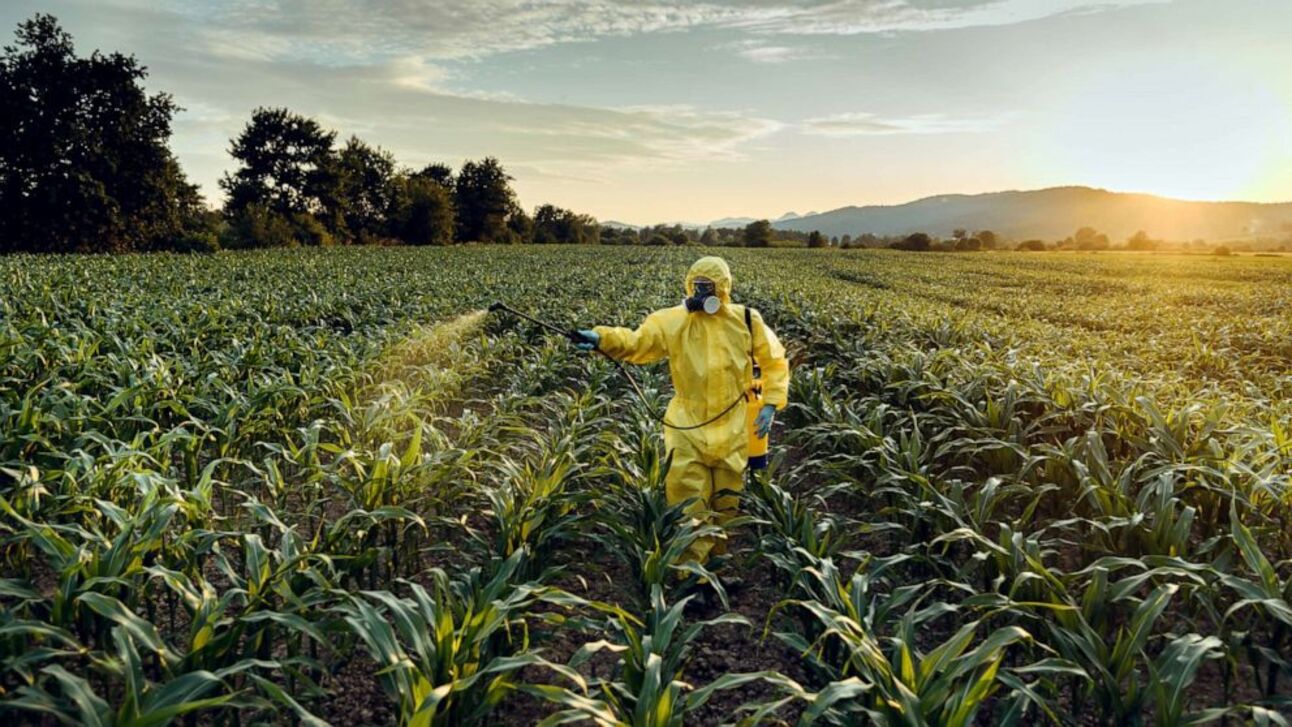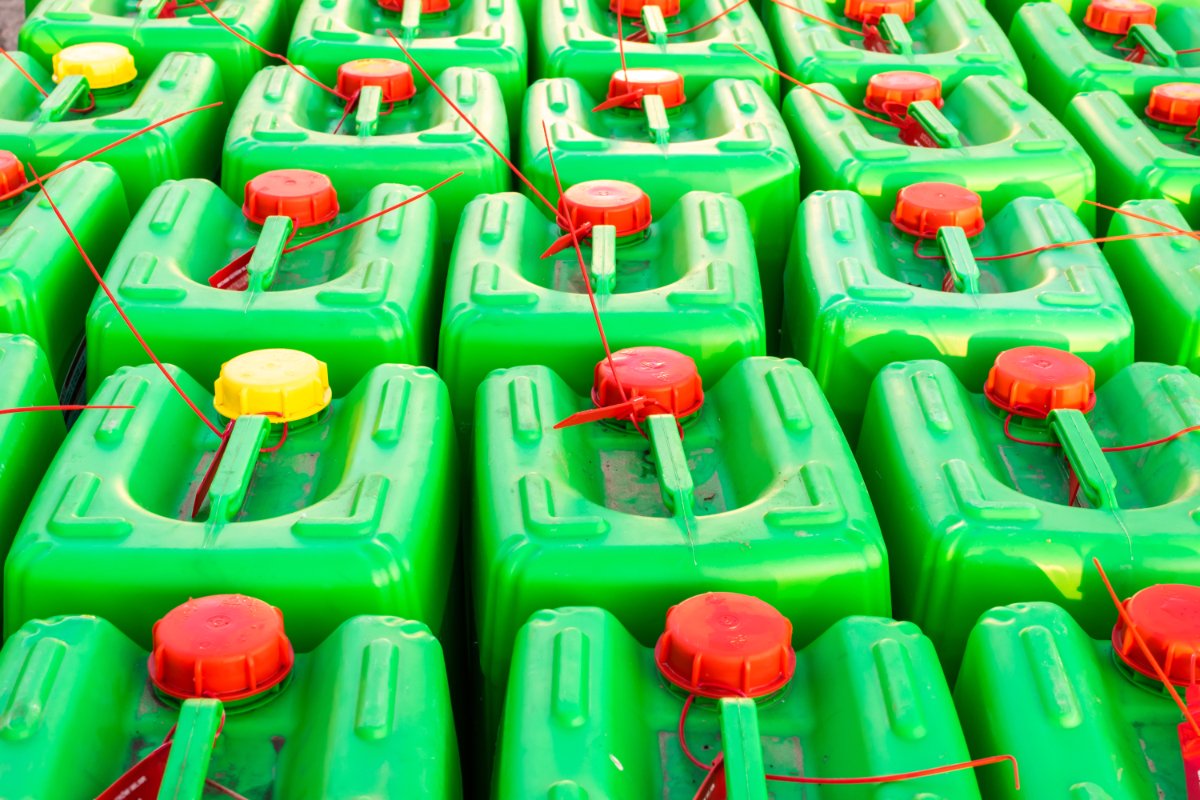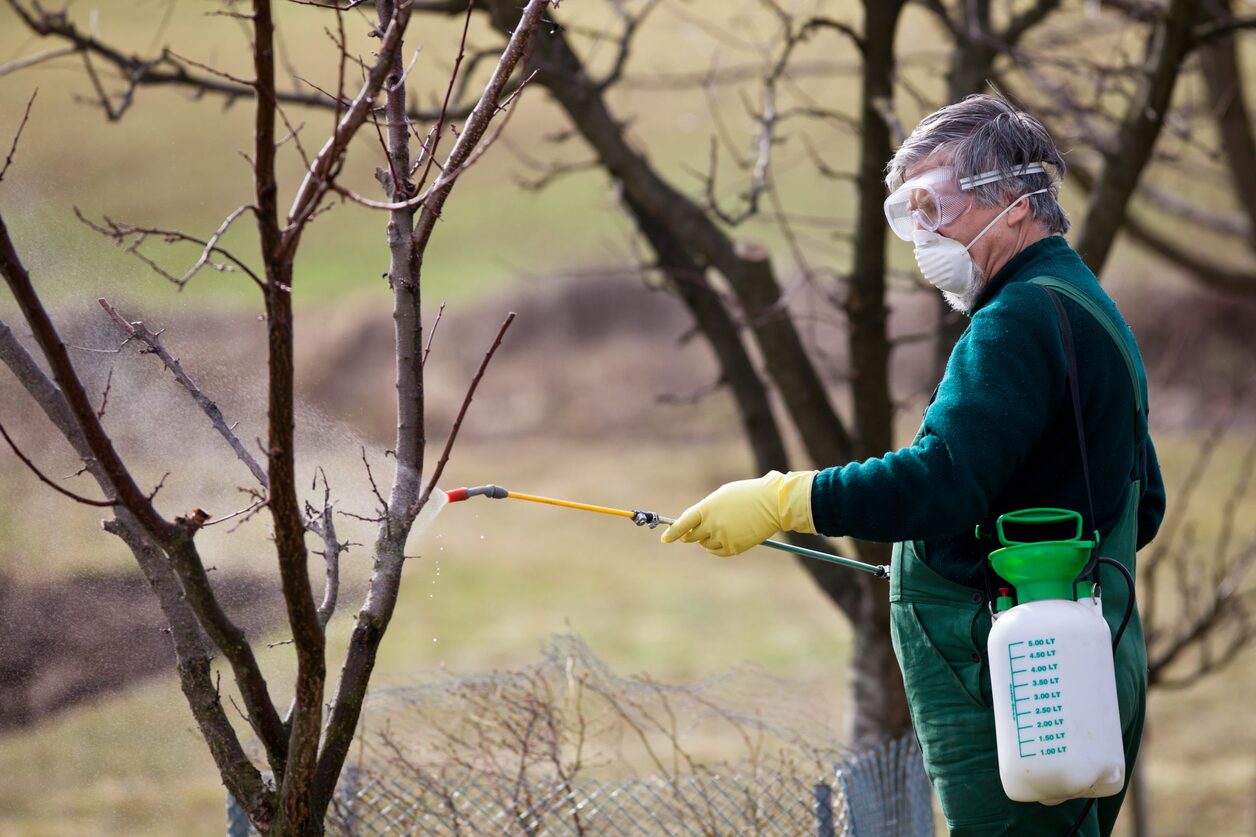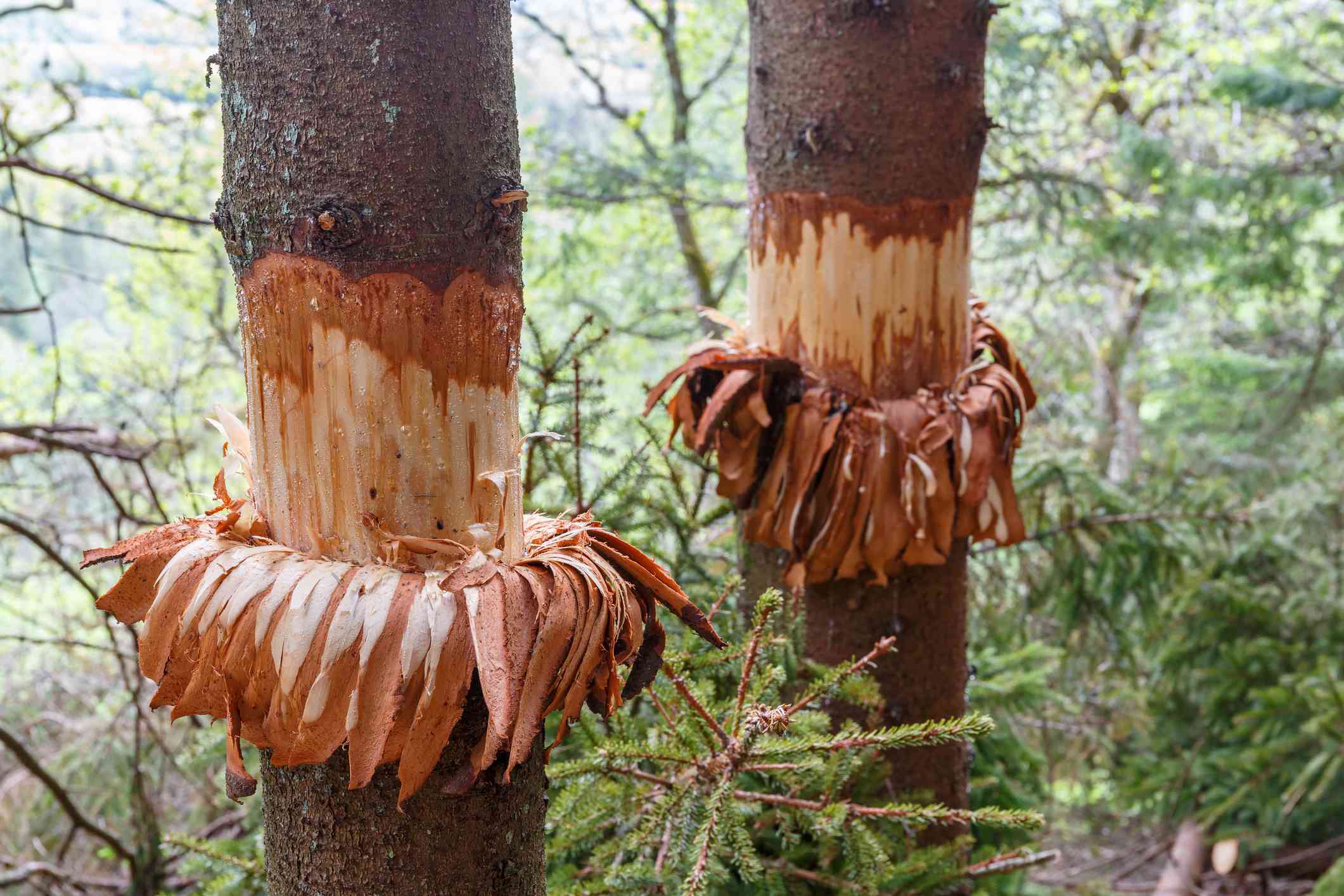Home>Gardening News and Trends>Latest News>What Do Pesticides Kill
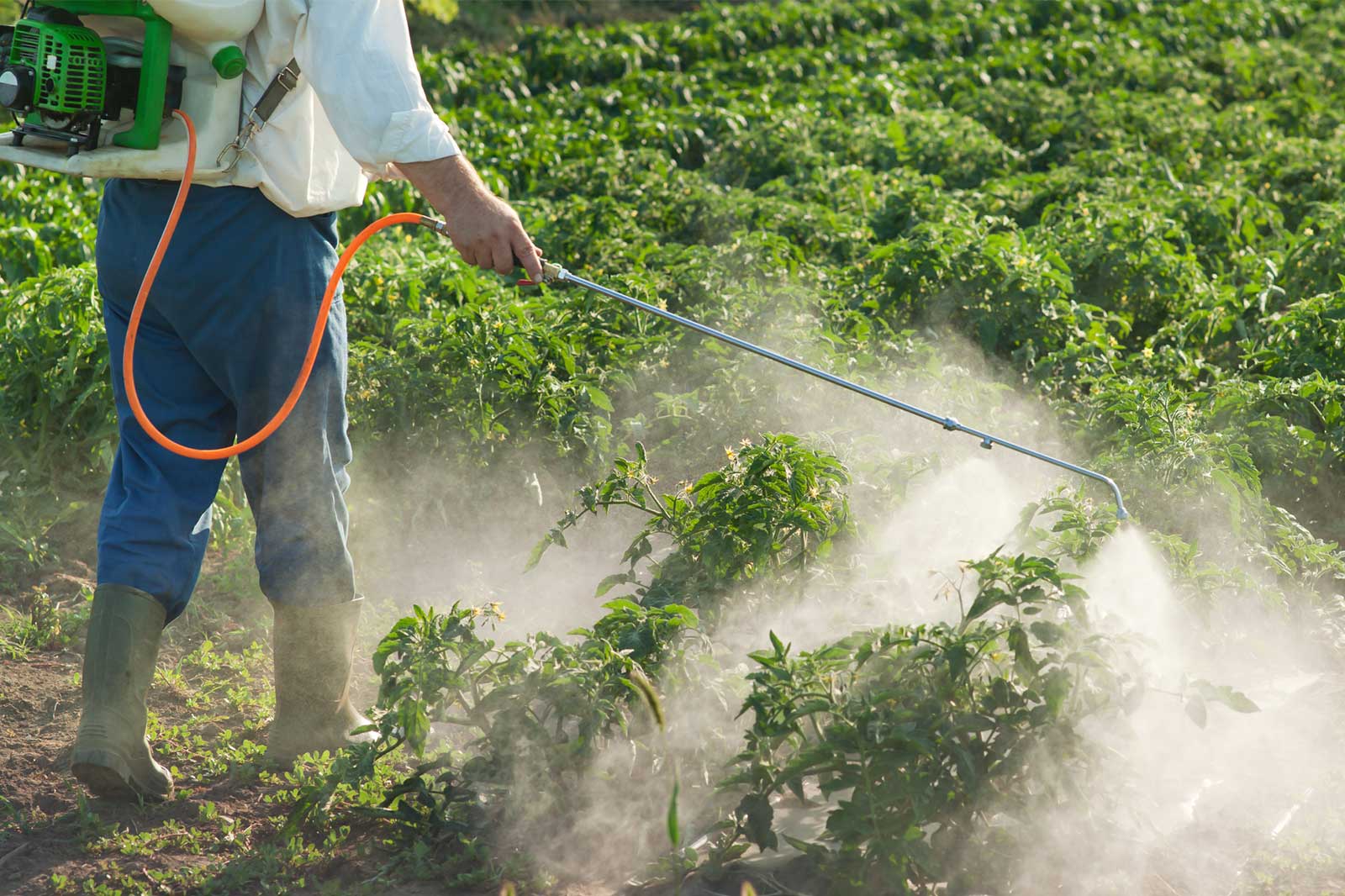

Latest News
What Do Pesticides Kill
Modified: January 22, 2024
Stay informed with the latest news on what pesticides kill. Discover the potential dangers and impact on the environment caused by pesticide use.
(Many of the links in this article redirect to a specific reviewed product. Your purchase of these products through affiliate links helps to generate commission for Chicagolandgardening.com, at no extra cost. Learn more)
Table of Contents
Introduction
Pesticides are chemical substances used to control or eliminate pests that can be harmful to crops, livestock, or human health. They play a crucial role in modern agriculture by protecting crops from insects, diseases, and weeds. However, the use of pesticides also raises concerns about their impact on the environment and human health.
Since the introduction of synthetic pesticides in the mid-20th century, their usage has increased significantly. Pesticides are now widely used in agriculture, forestry, urban pest control, and even in our homes and gardens. While pesticides can be effective in protecting plants and controlling pests, they can also have unintended consequences for non-target organisms and ecosystems.
It is important to understand the various types of pesticides and their potential effects to make informed decisions regarding their usage. In this article, we will explore the impact of pesticides on different organisms and the environment, ranging from insects and birds to aquatic life and bees. We will also examine the potential risks associated with pesticide exposure to human health.
Types of Pesticides
Pesticides can be classified into different categories based on their chemical composition and target pests. The various types of pesticides include insecticides, herbicides, fungicides, rodenticides, and bactericides. Let’s take a closer look at each of these types:
Insecticides
Insecticides are designed to eliminate or control insect populations that can damage crops or spread diseases. They can be further classified into contact insecticides, which kill insects upon direct contact, and systemic insecticides, which are absorbed by plants and kill insects that feed on them. Insecticides can be highly effective in controlling pests, but they can also harm beneficial insects like bees and ladybugs, disrupting the delicate balance of ecosystems.
Herbicides
Herbicides are used to control or kill unwanted plants or weeds that compete with crops for nutrients, sunlight, and water. They can be selective, targeting specific types of plants, or non-selective, affecting a broad range of plants. While herbicides can improve crop yields and make agriculture more efficient, they can also have negative impacts on biodiversity by reducing habitat for wildlife and leading to the development of herbicide-resistant weeds.
Fungicides
Fungicides are used to prevent or treat fungal diseases that can damage crops, such as powdery mildew or rust. By suppressing fungal growth, fungicides help protect plants and prevent yield losses. However, indiscriminate use of fungicides can lead to the emergence of resistant fungal strains and negatively impact non-target organisms, including beneficial fungi that contribute to soil health.
Rodenticides
Rodenticides are specifically formulated to control rodent populations that can cause damage to crops, contaminate food, and transmit diseases. These pesticides can be designed to kill rodents directly or inhibit their reproductive capacities. However, rodenticides can pose risks to non-target animals, including birds of prey and other predators that may consume poisoned rodents.
Bactericides
Bactericides are used to control bacterial diseases that can affect plants, such as bacterial blight or fire blight. They work by suppressing the growth and spread of harmful bacteria. While bactericides can be effective in managing bacterial infections, their use should be carefully regulated to minimize potential negative impacts on non-target bacteria, which are essential for maintaining healthy soil ecosystems.
It is worth noting that the use of pesticides should be approached with caution, taking into consideration their potential environmental impacts and the development of resistance in target pests. Integrated Pest Management (IPM) practices, which aim to minimize pesticide usage by employing a combination of biological, mechanical, and chemical control methods, offer a more sustainable approach to pest management.
Effects of Pesticides on Insects
Pesticides, especially insecticides, are primarily designed to target and control insect populations. However, their use can have significant unintended consequences on non-target insects and ecosystems. Let’s explore some of the effects pesticides can have on insects:
Direct Mortality: Insecticides can cause direct mortality among insect populations by killing them upon contact or ingestion. While this may be the intended effect for pest control, it can also impact beneficial insects, such as pollinators, predators, and parasitoids, which play vital roles in natural pest management and maintaining ecosystem balance. Loss of these beneficial insects can disrupt the intricate relationships within ecosystems and lead to a spike in pest populations.
Sublethal Effects: Even sublethal doses of insecticides can have adverse effects on insects, impairing their behavior, reproduction, and development. For example, exposure to certain insecticides can hinder the navigational abilities of bees and affect their ability to locate food sources and return to their hives. Additionally, exposure to sublethal doses of insecticides can negatively impact the growth and survival of aquatic insects, which serve as important food sources for fish and other aquatic organisms.
Development of Resistance: The repetitive use of insecticides can lead to the development of resistance in target insect populations. Insects that have a natural genetic variation that allows them to survive exposure to the pesticide will survive and reproduce, passing on their resistance traits to the next generation. Over time, this can result in the emergence of pesticide-resistant insect populations, making the pesticides less effective and requiring higher concentrations or different chemicals to achieve control.
Disruption of Food Chains: Pesticides can disrupt food chains and ecological relationships by reducing populations of certain insects that serve as food sources for other organisms. For example, declines in insect populations due to pesticide use can negatively impact bird populations that rely on insects as a primary food source. This can have far-reaching consequences for the health and stability of ecosystems.
To mitigate the negative effects of pesticides on insects, it is important to adopt integrated pest management (IPM) strategies that minimize pesticide use and employ alternative methods of pest control. These strategies can include crop rotation, biological control using natural enemies of pests, and cultural practices such as planting native plants to attract beneficial insects. By reducing dependence on pesticides and promoting sustainable pest management practices, we can help protect insect populations and maintain the delicate balance of ecosystems.
Effects of Pesticides on Birds
Pesticides, particularly insecticides and rodenticides, can have significant impacts on bird populations. Birds are often exposed to pesticides through direct contact with treated surfaces, ingestion of contaminated food or water, or consumption of poisoned prey. Here are some of the effects pesticides can have on birds:
Acute Toxicity: Many pesticides, such as organophosphates and carbamates, are highly toxic to birds. Birds can experience acute poisoning if they directly consume or come into contact with these chemicals. Acute toxicity can lead to neurological damage, respiratory distress, and even death. Birds that consume pesticide-laced baits intended for rodent control can also experience toxic effects.
Indirect Effects: Pesticides can indirectly impact bird populations by affecting their food sources. For example, the use of insecticides can lead to declines in insect populations, reducing the availability of insects as a food source for birds. This can have cascading effects on bird reproduction, survival, and overall population health.
Eggshell Thinning and Reproductive Impacts: Certain types of pesticides, such as organochlorine insecticides like DDT, can cause eggshell thinning in birds. Thinner eggshells are more likely to break during incubation, leading to reduced hatching success and population declines. Pesticides can also affect the reproductive abilities of birds, leading to reduced fertility and impaired breeding success.
Disruption of Behavior: Pesticides can disrupt bird behavior and impair their ability to navigate, communicate, and find food. For example, neonicotinoid insecticides can affect bird navigation by interfering with their central nervous system, making it difficult for them to find their way during migration.
It is worth noting that certain bird species, such as raptors and waterfowl, are more susceptible to the impacts of pesticides due to their feeding habits and biology. Raptors can be indirectly exposed to pesticides when they consume prey that has ingested contaminated food or been exposed to pesticides directly. Waterfowl can be affected by ingesting pesticides through contaminated water or by feeding in areas sprayed with pesticides.
To protect bird populations from the harmful effects of pesticides, there are several mitigation measures that can be implemented. These include reducing pesticide use through integrated pest management (IPM) practices, implementing buffer zones around sensitive bird habitats, and promoting alternatives to chemical pesticides, such as biological control methods. Additionally, pesticide labels and regulations should be carefully followed to minimize off-target effects on birds and other non-target organisms.
By adopting responsible pesticide use practices and prioritizing the protection of bird species, we can help maintain healthy bird populations and preserve the biodiversity and ecological balance of our environments.
Effects of Pesticides on Fish and Aquatic Life
Pesticides, particularly herbicides and insecticides, can have significant impacts on fish and other aquatic organisms. When pesticides are applied to land, they can enter water bodies through runoff or direct application. Once in the water, pesticides can have both immediate and long-term effects on fish and other aquatic life. Here are some of the effects pesticides can have on aquatic ecosystems:
Acute Toxicity: Pesticides can have direct toxic effects on fish and other aquatic organisms. For example, certain insecticides, such as organophosphates or pyrethroids, can impair the nervous systems of fish, leading to disorientation, impaired swimming ability, and even death. Acute toxicity can also affect other organisms in the aquatic food chain, disrupting the balance of the ecosystem.
Chronic Exposure: Prolonged exposure to low levels of pesticides can have chronic effects on fish and aquatic organisms. Chronic exposure can affect growth, reproduction, and development, leading to reduced population sizes and impaired overall ecosystem health. Fish exposed to chronic pesticide pollution may exhibit abnormalities, reduced fertility, and altered behavior.
Disruption of Food Webs: Pesticides can disrupt aquatic food webs by affecting the abundance and diversity of primary producers, such as algae and aquatic plants, as well as the invertebrates that rely on them. This can have cascading effects on the entire ecosystem, impacting fish populations and other higher trophic levels. Reductions in prey availability due to pesticide effects can lead to declines in fish population size and alter community dynamics.
Water Quality Impacts: Pesticides can degrade water quality by introducing chemical contaminants into aquatic ecosystems. This can have wide-ranging effects on water chemistry and physical characteristics, such as dissolved oxygen levels and pH, which in turn can impact the survival and behavior of fish and other aquatic organisms.
It is important to note that certain species of fish, such as salmon and trout, can be particularly vulnerable to pesticide impacts due to their sensitivity to changes in water quality and their dependence on specific habitats for spawning and rearing. Additionally, amphibians, aquatic invertebrates, and other non-target organisms in aquatic ecosystems can also be significantly affected by pesticide exposure.
To mitigate the negative effects of pesticides on fish and aquatic life, steps can be taken to reduce pesticide runoff into water bodies. These include the use of vegetative buffer strips, which can filter runoff and trap pesticides before they reach waterways, and implementing best management practices in agriculture and forestry to minimize pesticide use and runoff. Additionally, incorporating alternative pest management strategies, such as biological controls and integrated pest management (IPM) practices, can help reduce reliance on pesticides and protect aquatic ecosystems.
By adopting responsible pesticide use practices and implementing measures to protect water quality, we can safeguard the health and diversity of fish and other aquatic organisms, ensuring the long-term sustainability of our freshwater and marine ecosystems.
Effects of Pesticides on Bees and Other Pollinators
Pesticides, particularly insecticides, can have detrimental effects on bees and other pollinators, which are essential for the pollination of flowering plants and the production of fruits, vegetables, nuts, and seeds. The exposure of pollinators to pesticides can occur through direct contact with treated crops or flowers, ingestion of contaminated nectar or pollen, or exposure to pesticide-contaminated water sources. Here’s a closer look at the effects of pesticides on bees and other pollinators:
Acute Toxicity: Many insecticides, such as neonicotinoids and pyrethroids, can be highly toxic to bees and other pollinators. Even small amounts of these chemicals can have immediate lethal effects on bees. Pesticide exposure can impair their nervous systems, causing paralysis, disorientation, and death. Other pollinators, such as butterflies and moths, can also be affected by pesticide toxicity.
Sublethal Effects: Even at sublethal doses, pesticides can harm bees and other pollinators. Sublethal exposure can affect their foraging behavior, impair memory and learning abilities, and impact their ability to navigate and find their way back to their nests or hives. These sublethal effects can have long-term consequences for pollinator populations and their reproductive success.
Colony Collapse Disorder (CCD): Pesticides, particularly neonicotinoids, have been linked to the phenomenon known as Colony Collapse Disorder, where entire honeybee colonies experience sudden and significant population decline. The exact mechanism behind CCD is not fully understood, but pesticide exposure, along with other factors such as diseases, habitat loss, and climate change, is believed to contribute to the decline of honeybee populations.
Impact on Native and Wild Pollinators: It is not just honeybees that are affected by pesticide exposure; native and wild pollinators, including bumblebees, solitary bees, butterflies, and hoverflies, are also at risk. These pollinators play crucial roles in our ecosystems and are essential for the pollination and reproduction of many native plants. Pesticide exposure can disrupt their populations, leading to a decline in their numbers and biodiversity.
To mitigate the negative effects of pesticides on pollinators, it is important to adopt pollinator-friendly practices. This includes minimizing pesticide use through integrated pest management (IPM) approaches, using alternative pest control methods such as biological controls, and creating a habitat that supports pollinators, with diverse and pesticide-free flowering plants. Tackling pesticide use in agricultural settings, promoting the planting of native wildflowers, and raising awareness about the importance of pollinators are also vital steps towards protecting these crucial creatures.
By safeguarding pollinators from the harmful impacts of pesticides, we can ensure the continued pollination of plants, maintain biodiversity, and support the sustainable production of our food crops.
Effects of Pesticides on Soil Microorganisms
Pesticides, particularly herbicides and fungicides, can have significant effects on soil microorganisms, which play crucial roles in soil fertility, nutrient cycling, and overall ecosystem health. Soil microorganisms include bacteria, fungi, archaea, and other microscopic organisms that inhabit the soil and perform vital functions for plant growth and soil sustainability. Here’s a closer look at the effects of pesticides on soil microorganisms:
Reduction in Microbial Diversity: Pesticide use has been found to reduce the diversity and abundance of soil microorganisms. Some pesticides, including broad-spectrum fungicides and herbicides, can have non-specific effects on soil microorganisms, leading to a decline in beneficial species and an increase in resistant or opportunistic microorganisms. This reduction in microbial diversity can disrupt important ecological interactions and compromise soil health.
Impaired Nutrient Cycling: Soil microorganisms play a critical role in nutrient cycling by decomposing organic matter and making nutrients available to plants. When exposed to pesticides, soil microorganisms may be inhibited or killed, leading to a decrease in organic matter decomposition and nutrient cycling. This can negatively affect plant growth and productivity.
Disruption of Symbiotic Relationships: Certain pesticides, such as fungicides and insecticides, can disrupt beneficial symbiotic relationships between plants, microorganisms, and soil-dwelling organisms. For example, the use of fungicides can reduce the populations of beneficial mycorrhizal fungi, which form symbiotic associations with plant roots and enhance nutrient uptake. This can impair plant growth and decrease soil fertility.
Resistance Development: Over time, repeated exposure to pesticides can lead to the development of resistance in soil microorganisms. Microorganisms that are unaffected or resistant to the pesticide can proliferate, potentially leading to imbalances in soil microbial communities. This resistance development can pose challenges for effective pest and disease management in agriculture.
It is important to note that the impact of pesticides on soil microorganisms can vary depending on the type, concentration, and application method of the pesticide, as well as environmental factors and soil properties. Some pesticides can break down more rapidly in the environment, while others may persist and accumulate in the soil, exerting long-term effects on soil microorganisms.
To minimize the negative effects of pesticides on soil microorganisms, it is important to adopt sustainable agricultural practices. These practices include the targeted use of pesticides only when necessary, the integration of biological control methods, crop rotation, and the addition of organic matter to improve soil health. Additionally, preserving natural habitats such as hedgerows and buffer zones can provide refuge for beneficial soil microorganisms and promote biodiversity in agricultural landscapes.
By reducing reliance on pesticides and implementing soil-friendly practices, we can protect the vital functions performed by soil microorganisms and promote the long-term health and fertility of our soils.
Effects of Pesticides on Human Health
Pesticides, while designed to control pests and protect crops, can also have potential impacts on human health. Both acute and chronic pesticide exposure can occur through various routes, including direct contact, inhalation, and consumption of pesticide-contaminated food and water. Here are some of the effects of pesticides on human health:
Acute Toxicity: Pesticides can have immediate toxic effects on humans if they come into direct contact with the chemicals. Symptoms of acute pesticide poisoning can vary depending on the type and concentration of the pesticide, ranging from mild symptoms such as skin irritation and nausea to more severe reactions including respiratory distress, neurological disorders, or even death in extreme cases.
Chronic Health Implications: Long-term exposure to low levels of pesticides can have chronic health implications. Some pesticides, such as organophosphates and organochlorines, have been linked to developmental delays, neurobehavioral problems, and increased risk of certain cancers. Chronic pesticide exposure can also impact the endocrine system, leading to hormonal imbalances and reproductive disorders. The effects may be particularly concerning for agricultural workers who are regularly exposed to pesticides in their occupation.
Residue in Food: Pesticide residues can be present on fruits, vegetables, grains, and other food products. Consuming food with pesticide residues, especially at high levels, can pose health risks. Certain groups, such as pregnant women, infants, and young children, may be more vulnerable to the effects of pesticide exposure due to their still-developing physiological systems.
Environmental Contamination: Pesticide use can contribute to environmental contamination, leading to the presence of pesticides in air, water, and soil. This environmental contamination can have indirect impacts on human health through the consumption of contaminated water or the inhalation of pesticide-laden air.
Development of Pesticide Resistance: Excessive and indiscriminate use of pesticides can contribute to the development of pesticide resistance in pests. This can lead to increased pesticide applications and potential exposure to higher levels of pesticides in attempts to control resistant pests, putting human health at further risk.
To protect human health from the adverse effects of pesticides, it is important to adopt measures that reduce pesticide exposure. This includes following proper safety protocols and protective measures during pesticide application, utilizing alternative pest management practices such as integrated pest management (IPM) strategies, and thoroughly washing fruits and vegetables before consumption to reduce pesticide residues. Additionally, rigorous regulation and monitoring of pesticide use can help ensure that acceptable levels of residue in food and water are maintained.
By promoting awareness of the potential health risks associated with pesticide exposure and implementing appropriate safety measures, we can minimize the impact of pesticides on human health and create safer environments for everyone.
Conclusion
Pesticides play a vital role in modern agriculture, helping to protect crops from pests and diseases. However, it is important to recognize that the use of pesticides can have unintended consequences on the environment and human health. Throughout this article, we have explored the effects of pesticides on various organisms, ranging from insects and birds to fish, soil microorganisms, and human health.
Insects, which are the primary target of pesticides, can experience direct mortality and sublethal effects. Additionally, pesticides can disrupt food chains, contribute to the development of resistance, and harm beneficial insects that contribute to ecosystem balance. Birds can be impacted through acute toxicity, eggshell thinning, and disruption of behavior, while fish and other aquatic life can suffer from acute toxicity, chronic exposure, and disruption of food webs. Soil microorganisms that are crucial for soil fertility and nutrient cycling can be negatively affected, leading to imbalances in soil health. Lastly, humans can experience acute and chronic health effects, especially from pesticide residues in food and environmental contamination.
To mitigate the negative impacts of pesticides, it is important to adopt sustainable practices such as integrated pest management (IPM), which seeks to minimize reliance on pesticides and incorporates alternative pest control methods. By reducing pesticide use, implementing buffer zones, and promoting practices that protect pollinators, soil microorganisms, and aquatic life, we can create a healthier and more environmentally-friendly approach to pest management.
It is also crucial to raise awareness about the potential risks of pesticide exposure and advocate for robust regulations and monitoring of pesticide use. By empowering individuals, farmers, and communities with knowledge about safer and more sustainable alternatives, we can work towards minimizing the adverse effects of pesticides on both the environment and human health.
In conclusion, responsible pesticide use, in conjunction with sustainable agricultural practices, can minimize the detrimental effects of pesticides while still protecting crops and promoting a healthy environment for all organisms. By striking a balance between effective pest control and protecting the ecosystem, we can ensure a sustainable future for agriculture and preserve the health and well-being of our ecosystems and communities.
